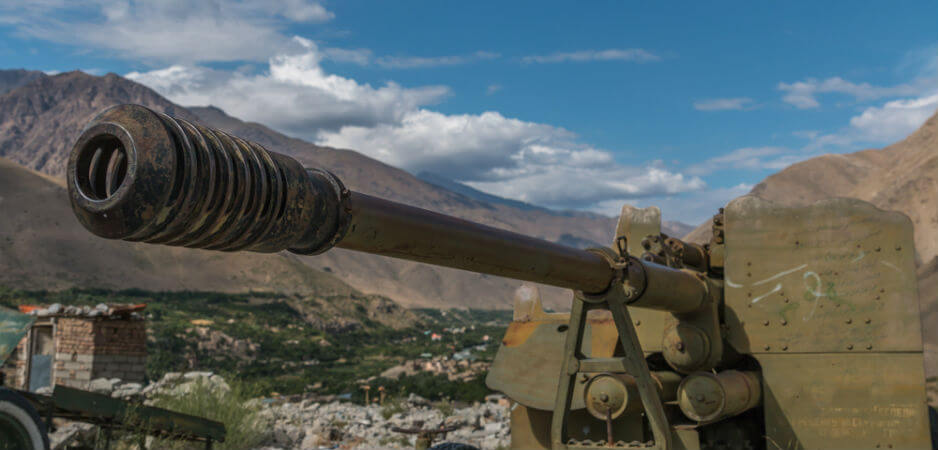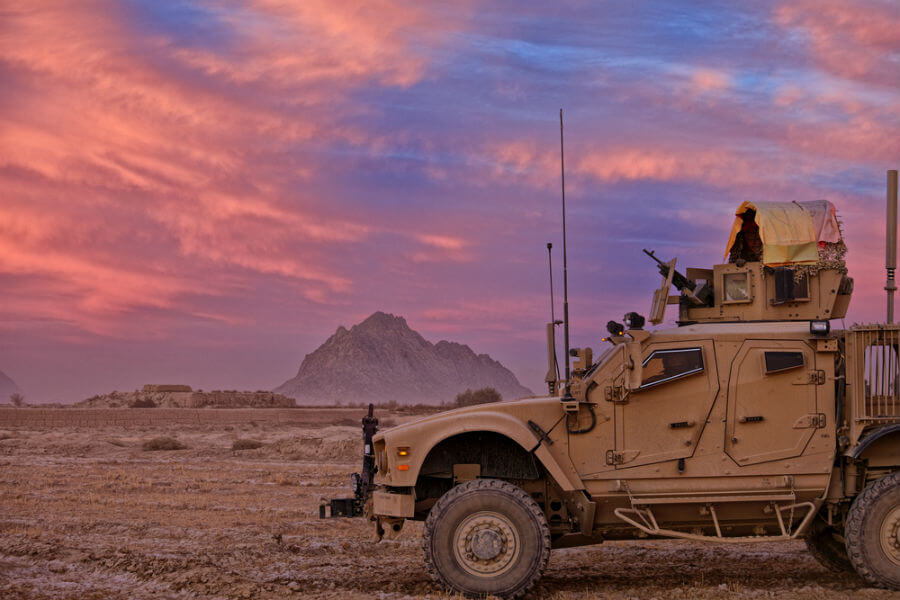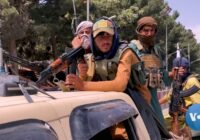International cooperation is essential to destroy sanctuaries of militant jihadism in Asia.
In July 2015, at the BRICS Summit, Afghan President Mohammad Ashraf Ghani said: “While threats to global order in general and to the state system in particular are increasing, the response is too fragmented and episodic.” Similarly, in a statement during the Shanghai Cooperation Organisation Summit, he reiterated: “Terrorists are not fighting Afghans, but the state system in the entire region. Terrorists want to pursue their international agenda by destabilizing the regional order.”
The foundation of today’s international order was laid down by the Peace of Westphalia in 1648, which ended the Thirty Years’ War in Europe. The Westphalian model created common grounds for cooperation through nation state structures in Europe and, later, encapsulated other regions, including the Muslim world.
Despite colonialism and the emergence of transnational groupings such as the United Nations and the European Union, the Westphalian system remains strong and continues to define international order. However, the system could never end inter-state wars completely. State-sponsored terrorism, interference in the internal affairs of other countries, and plots against national sovereignty are still significant in international relations.
The rise of militant jihadists such as the Islamic State (IS), the Taliban and al-Qaeda threaten the survival of the Westphalian model. Afghanistan, Iraq and Syria are the most direct victims of these groups. But how can the state system be strengthened and offer international policies to counter the threat of militants?
Underestimation of the Threat
Challenges include the underestimation of the threat in international policy discourse and policy fragmentation. Since the end of colonialism, as Moritz Mihatsch explains, this is the first time that the state system has been profoundly threatened by terrorists such as IS. According to him, jihadists are against the state system and he labels them as “the post-Westphalia dystopia.” However, according to Mihatsch, while the “Taliban and most other Islamist movements function in the Westphalian state model, IS rejects it. It is effectively the first post-Westphalian entity to arise since the end of colonialism, and the consequences could be dire.”
But the history of other jihadist groups such as the Taliban and al-Qaeda tell a different story. Al-Qaeda, too, rejected, the notion of nation state order, and the Taliban was ideologically inspired by al-Qaeda with which it enjoys strong affiliation. The differences of jihadist movements should not overshadow their ideological and political similarities. For jihadist movements, the Westphalian paradigm is the product of Western modernity, which is perceived as jahiliyya (ignorance of divine guidance).
However, the movements started to fight first against their own “infidel” governments. As Michael Walzer argues, jihadist movements are “zealots” who fight against modern values such as individual liberty, democracy, gender equality and religious pluralism. In fact, these “zealots” not only oppose these values, but also attempt to change the state-centric international order. South Asia could be the next victim of these militarized zealots, if there is not interstate cooperation in the region.
Analysts such as Barak Mendelsohn have said that the jihadist “accepts the state-based international order as an organizing principle,” adding that “they do not seek a limited fix to particular problems in the international system, but to overthrow the state-based Westphalian order and establish an alternative order in its stead.”
Militant jihadism also demonstrates a cultural and sociopolitical pathology under the platform of violent religious movements. It is contradictory with civilizational development of the modern world and all other civilizational heritages. From the Taliban to the Islamic State, they are against cultural heritage of the Muslim world. In March 2001, the Taliban destroyed the Buddhas of Bamiyan in Afghanistan, and in 2015, IS destroyed the ancient Arch of Triumph in Palmyra, Syria.
These patterns of destruction of civilizational heritage reflect the ideological similarities of militant jihadism, which is the “consequence of fanatic iconoclasm” worldview of such groups.
Despite the clarity and similarity of jihadist movements’ ideology and actions, there is a continued hesitation to understand them as a threat against state-system order and the future of the world. In particular, there is no strong discursive position in the regional and international leaderships to recognize the threat posed.
Regional Expansion of the Threat
International policy fragmentations provide opportunities for jihadism to expand. The spread of IS from the Middle East to Africa and South Asia poses a significant danger to the state system in these areas. In North Africa, jihadists have launched attacks in Egypt, Tunisia and Libya. In Nigeria, Boko Haram has already pledged allegiance to IS and its leader, Abu Bakr al-Baghdadi. In July 2015, IS-affiliated militants carried out numerous attacks in Egypt that killed at least 100 people, including the assailants. In Tunisia, IS killed 38 people in June last year. Instability in Libya has provided IS and other jihadist networks with fertile ground for recruitment and training for the whole region. The terrorist organization is becoming a core concern for the Middle East and North Africa.
As such, from Morocco and Algeria to Tunisia and Egypt, jihadist movements are actively seeking to establish a caliphate or other forms of Islamic law-based order such as the Taliban’s “Islamic Emirate” in Afghanistan before 2001. The Islamic State’s goal is to establish a Sinai province of its caliphate in North Africa. Other jihadists have the same ambitions in different regions. They aim to establish their own territorial rule within a defined area of a given state, in order to organize themselves for their transnational strategy.
The lack of consensus among regional countries to fight against IS was disastrous for the Middle East. Militant groups are still used as a foreign policy tool in the region.
The practical mechanisms of expansion of IS in other regions are based on four strategic processes. First, IS tries to recruit more people from other regions such as South Asia and North Africa for its local military establishments or as foreign fighters.
Second, other jihadist movements in these regions have pledged their allegiance to IS and fight for the group in their own regions. For instance, the Pakistani Taliban (TTP), Boko Haram and the Islamic Movement of Uzbekistan (IMU) have all pledged their allegiances.
Third, members of other militant jihadists such as the Taliban in Afghanistan switched their position individually to join IS and al-Qaeda. Brian Tribus, a spokesman for the coalition’s mission in Afghanistan, said: “[W]e have also seen a few Taliban rebrand themselves as Daesh [IS], likely in an attempt to garner resources and attention.”
Fourth, jihadists will support each other to achieve their shared goals without organizational integration. For instance, the Taliban and al-Qaeda back each other in Afghanistan, and other militants supported each other in the 1980s in Afghanistan.
The strategic goal of IS in South Asia is to transform Afghanistan and Pakistan into one of its caliphate provinces. They refer to the region as Khorasan, the old name for a land that once consisted of parts of Afghanistan, Iran, Central Asia and Pakistan.
At the same time, after a decade of war in Afghanistan, the threat of the Taliban is still serious. The Afghan National Security Forces (ANSF) have proven that they can fight the insurgents militarily, but the reemergence of the Taliban is down to the wrong policy pursued by the international community.
There are four reasons behind this. First, the international community refuses to deal with the regional dimension of the Taliban and their sanctuaries in Pakistan and beyond. Second, the international community did not increase the number of ANSF at the beginning of War on Terror in 2001. Third, the international community has not equipped ANSF well enough to fight effectively against terrorism, and the Afghan Air Forces (AAF) are yet to be provided with effective air equipment in a mountainous country such as Afghanistan. Fourth, the international community did not focus on state-building and infrastructure in Afghanistan at the beginning. After 14 years, Afghanistan does not have infrastructure to grant socioeconomic stability. On other hand, weak institutions and corruption in the government have not helped.
Therefore, poor policy, regional fragmentation, state-sponsored terrorism and corruption have opened the space for the strengthening of militant jihadism and the destabilization of Afghanistan and the region.
Regional Fragmentation and International Ambiguity
There is not only the lack of regional and international action or political consensus, but also a reductionist approach to the threat. Terrorist groups like al-Qaeda, IS and the Taliban are not simply the effects of push factors such as “poverty, political repression, political marginalisation, poor governance and corruption.” These factors play important roles, but to limit jihadism to these causal dynamics excludes other equally important aspects of a very complex phenomenon.
Violence is not only a strategy for militant jihadism; it is a justified worldview that is creating meaning for such groups. They have raped, tortured and beheaded many innocent people to get their messages across. As Amin Saikal argues, “[W]hen it comes to the use of the politics of brutality, IS is not too far ahead of some other extremist groups, such as the Taliban, Al Qaeda, Al-Shabaab, and Boko Haram.”
Hence, more serious analysis is needed instead of a reductionist point of view. In today’s world, the takfiri (apostasy) system of thought and antagonism toward state system order and human rights should be viewed as a trend or path-dependency with a discursive power projected through offline and online communication processes. Thus, no single country would be able to stop the influence of IS and other militant jihadists, nor are they the enemy of a single country, but the enemy of the nation state system.
During the war against the pro-Soviet government in Afghanistan, most foreign fighters came from the Muslim world with big incentives from the East and West. But its impacts have lasted for generations in Afghanistan, with important consequences for the international security. During the Taliban regime, foreign fighters joined them and established safe havens with support from regional countries.
But in the case of IS, according to some estimates a significant number of its foreign fighters come from Western countries, with most contingents from other Muslim countries. Up to 20,000 foreign fighters have joined IS and around 4,000 of them come from Western countries. Similarly, hundreds of Pakistani Taliban members have joined IS. According to a recent PISM study, there are 1,600 fighters from Central Asian countries too.
The lack of consensus among regional countries to fight against IS was disastrous for the Middle East. Militant groups are still used as a foreign policy tool in the region. South Asia has suffered from the same problem. Moreover, there is no strategic consensus on the part of the international community to deliver practical measures to enforce cooperation at the regional level. Despite 9/11 and the occupation of Afghanistan by the Taliban and al-Qaeda, a discursive trend to recognize and designate jihadism as a threat against the state-system order does not come in policy practice.
Therefore, there is a need to go beyond Kenneth Waltz’s idea of self-help measures in an anarchical world and see the solutions in collaboration among states. The international community can reinforce states to fight against this threat and not use it as foreign policy tool against each other. The reality is that the danger posed to state system order is a different security paradigm and requires strong consensus among nations to fight it. But there is no such thing yet as Hedley Bull’s “society of states” that can defend itself.
Reinforcing Cooperation and Rescuing Order
During the drawdown of international troops from Afghanistan, jihadists such as the Taliban, IS and the Haqqani Network have increased their attacks. But the Taliban’s operational capability depends on the levels of their regional support. Fareed Zakaria argues that the Taliban “is shaped, aided and armed from across the border by one of the world’s most powerful armies [such as Pakistan].” According to Ashraf Jehangir Qazi, the former Pakistani ambassador to the US, despite Afghanistan’s cooperative approach toward Pakistan, the country kept “playing its usual double game.”
In September 2015, the Taliban’s operation in Kunduz showed that there is no difference between IS and the Taliban in terms of human rights violation and brutality. But the international community could not fight well against this disease in order to protect values and order.
In fact, the credibility of the international community has been undermined by ignoring the regional dimension of terrorism and the expansion of militant jihadism. To a large extent, jihadists continue to receive support from states in South Asia and the Middle East. The international community would run the risk of losing its legitimacy and leadership by pursuing a policy of negligence in this regard, particularly if peace talks by the Quadrilateral Coordination Group end without a result.
While the US has designated IS affiliates in Afghanistan and Pakistan as terrorist organizations, it is not enough. A result-oriented policy requires state to state cooperation for the eradication of terrorism sanctuaries.
Therefore, the required practical measures at the regional and international levels are three-fold: First, to defend the state system order as an international framework for relatively peaceful interaction; second, to promote regional cooperation and stabilize the sub-international system levels; and third, to support anti-extremism organizations, institutions and governments.
The presence of a US-led coalition in South Asia can be used to bolster regional platforms such as SAARC, SCO, ECO and the Heart of Asia-Istanbul Process, and enforce cooperation against militant jihadism in Asia. But the precondition of peace and cooperation is the eradication of resources and sanctuaries of militant jihadism in the region through international support.
The views expressed in this article are the author’s own and do not necessarily reflect Fair Observer’s editorial policy.
Photo Credit: Tor Pur / Nate Derrick / Wead / Shutterstock.com
 We bring you perspectives from around the world. Help us to inform and educate. Your donation is tax-deductible. Join over 400 people to become a donor or you could choose to be a sponsor.
We bring you perspectives from around the world. Help us to inform and educate. Your donation is tax-deductible. Join over 400 people to become a donor or you could choose to be a sponsor.
Support Fair Observer
We rely on your support for our independence, diversity and quality.
For more than 10 years, Fair Observer has been free, fair and independent. No billionaire owns us, no advertisers control us. We are a reader-supported nonprofit. Unlike many other publications, we keep our content free for readers regardless of where they live or whether they can afford to pay. We have no paywalls and no ads.
In the post-truth era of fake news, echo chambers and filter bubbles, we publish a plurality of perspectives from around the world. Anyone can publish with us, but everyone goes through a rigorous editorial process. So, you get fact-checked, well-reasoned content instead of noise.
We publish 2,500+ voices from 90+ countries. We also conduct education and training programs
on subjects ranging from digital media and journalism to writing and critical thinking. This
doesn’t come cheap. Servers, editors, trainers and web developers cost
money.
Please consider supporting us on a regular basis as a recurring donor or a
sustaining member.
Will you support FO’s journalism?
We rely on your support for our independence, diversity and quality.








